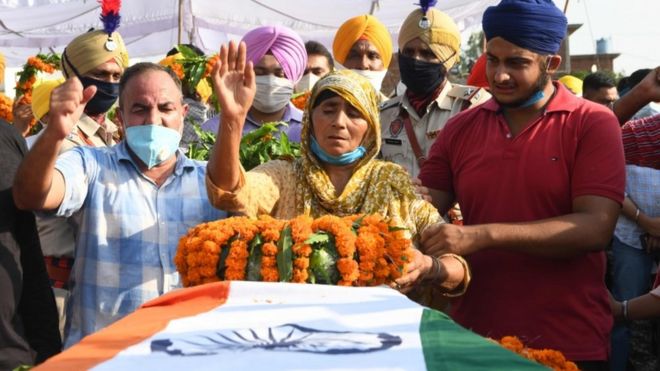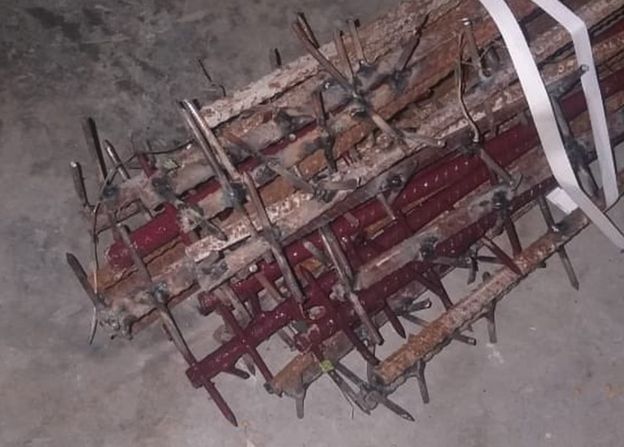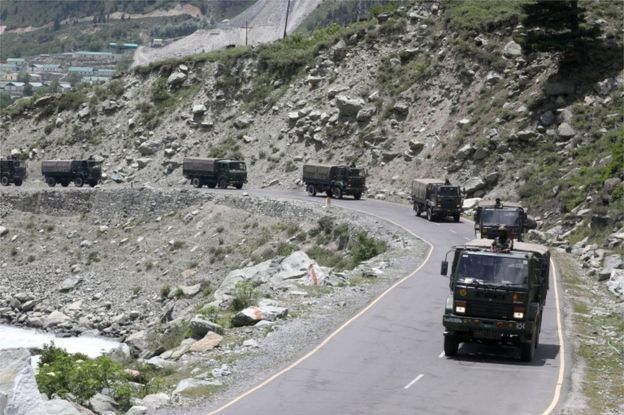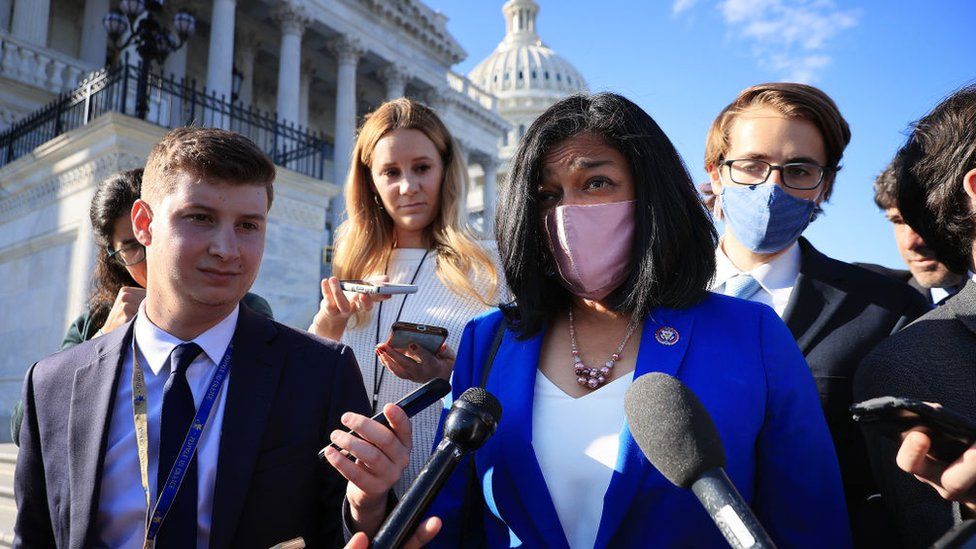Galwan Valley: Ten Indian soldiers reportedly released by China

The cremation ceremony for one of the Indian soldiers killed took place on Thursday
China has freed 10 Indian soldiers following a deadly clash between the two sides on Monday, according to Indian media reports.
The Hindu newspaper, quoting military sources, said those released included a lieutenant-colonel and three majors.
The Indian government has not confirmed the news, nor confirmed that any of its troops were missing.
The fight in the Galwan Valley left at least 20 Indian soldiers dead and raised tensions between the two powers.
China did not acknowledge any casualties among its forces, while at least 76 Indian soldiers were injured. Both sides accused the other of an incursion.
The border between the two nations in the region is poorly demarcated and can shift with topographical changes.
According to Shiv Aroor, a senior editor at India Today, the release of the Indian troops formed a key point of negotiations between the two sides on Wednesday.
According to Shiv Aroor, a senior editor at India Today, the release of the Indian troops formed a key point of negotiations between the two sides on Wednesday.

The news comes after an image emerged on Thursday of the crude weapons reportedly used in the fight.
The photograph, which appears to show iron rods studded with nails, was passed to the BBC by a senior Indian military official on the India-China border, who said the weapons had been used by the Chinese.

Defence analyst Ajai Shukla, who first tweeted the image, described the use of such weapons as "barbarism". The absence of firearms in the clash dates back to a 1996 agreement between the two sides that guns and explosives be prohibited along the disputed stretch of the border, to deter escalation.
The image was widely shared on Twitter in India, prompting outrage from many social media users. Neither Chinese or Indian officials have commented on it.
Media reports said troops clashed on ridges at a height of nearly 4,300m (14,000 ft) on steep terrain, with some soldiers falling into the fast-flowing Galwan river in sub-zero temperatures.
First deaths in four decades
The two sides have brawled along the disputed border in recent weeks, but Monday's clash was the first to lead to fatalities in at least 45 years. Unconfirmed reports in Indian media said at least 40 Chinese soldiers died, but China is yet to issue any information about casualties.
Indian officials said all of their soldiers involved in the clash have been accounted for, following reports some were missing.
Chinese foreign ministry spokesman Zhao Lijian said India had crossed the border twice, "provoking and attacking Chinese personnel, resulting in serious physical confrontation between border forces on the two sides", the AFP news agency reported.
China on Wednesday claimed "sovereignty over the Galwan Valley region" - a claim rebutted by India as "exaggerated and untenable".

Members of the public in both nations have since staged protests over the clashes in the disputed Himalayan border area, while officials have spoken cautiously and moved towards a diplomatic resolution.
Indian foreign ministry spokesperson Anurag Srivastava said the foreign ministers of both countries had phone conversation on Wednesday on the developments and "agreed that the overall situation should be handled in a responsible manner".
"Making exaggerated and untenable claims is contrary to this understanding," Mr Srivastava was quoted as saying by Press Trust of India news agency.
An Indian government statement after Subrahmanyam Jaishankar's conversation with China's Wang Yi said Chinese forces tried to erect a structure on the Indian side of the de facto border, the Line of Actual Control (LAC).
The statement accused the Chinese of a "premeditated and planned action that was directly responsible for the resulting violence and casualties" and urged China to "take corrective steps".
Meanwhile, a Chinese statement quoted Mr Wang as saying: "China again expresses strong protest to India and demands the Indian side launches a thorough investigation... and stop all provocative actions to ensure the same things do not happen again."









Comments